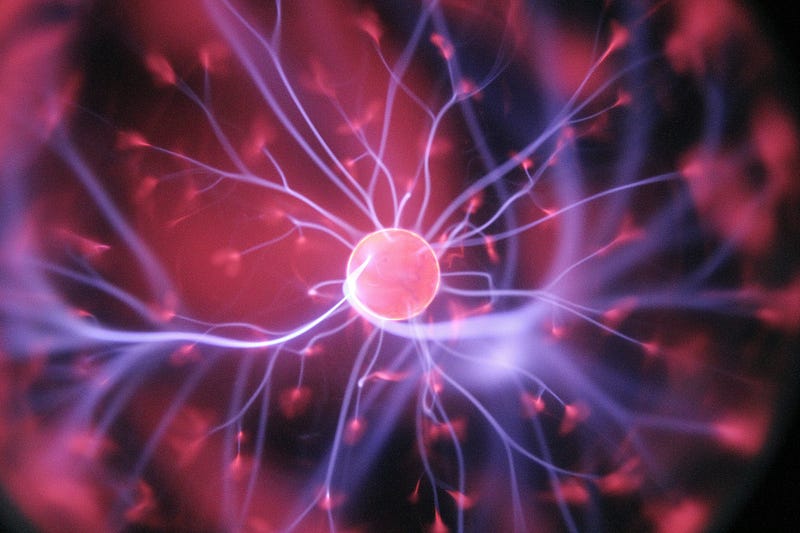The Mystery of Ghosts: Reality or Illusion?
Written on
Chapter 1: Introduction to Ghosts
The enigma surrounding the existence of ghosts has captivated human imagination for centuries. From ancient myths to contemporary horror narratives, the concept of spirits coexisting with the living stirs a mix of fear and intrigue. But what lies beneath these ghostly encounters? Are they genuine entities, or are they figments of our imagination? This exploration seeks to unravel the theories and evidence associated with the existence of ghosts.

Chapter 1.1: Cultural Beliefs in Ghosts
The belief in ghosts transcends geographical boundaries and is deeply embedded in various cultures. Many societies view ghosts as the souls of those who have passed away, unable to find peace due to unresolved issues, tragic endings, or a desire to protect their loved ones. For instance, during the Hungry Ghost Festival in Chinese culture, rituals are performed to honor wandering spirits. In Western traditions, tales of haunted places and restless spirits are prevalent in folklore and entertainment.
Chapter 1.2: Scientific Inquiry into Ghosts
From a scientific viewpoint, the existence of ghosts remains unverified. There is no solid empirical evidence that confirms the presence of spirits or apparitions. Instead, many ghostly phenomena can often be attributed to natural occurrences or psychological explanations.

1. Sleep Paralysis and Hallucinations
One prevalent explanation for ghostly encounters is the phenomenon of sleep paralysis. This condition occurs when an individual awakens from REM sleep but finds themselves temporarily immobilized. During this experience, they may encounter vivid hallucinations, which can include shadowy figures or the sensation of an unseen presence, leading to the belief that they have encountered a ghost.
2. Environmental Influences on Perception
Certain environmental conditions can mislead the brain into interpreting experiences as ghostly encounters. Low-frequency sound waves, also referred to as infrasound, can induce feelings of anxiety, unease, and even hallucinations. Infrasound can originate from natural events such as earthquakes or thunderstorms, as well as from specific mechanical devices. Additionally, fluctuations in electromagnetic fields may influence brain functions, potentially resulting in hallucinations or sensations of being observed.
3. The Influence of Suggestion
The human mind is remarkably suggestible and can be swayed by expectations. When individuals believe a location is haunted, they are more inclined to interpret any odd occurrences as paranormal. This phenomenon, termed the power of suggestion, can create a self-fulfilling prophecy, where believers in ghosts perceive supernatural activity simply due to their expectations.
Chapter 2: Investigating the Paranormal
Despite the absence of scientific validation, the field of paranormal investigation continues to thrive. Ghost hunters utilize various tools, such as electromagnetic field (EMF) meters and infrared cameras, to seek out evidence of paranormal activity. However, skeptics maintain that these methods are often flawed, and many alleged ghost sightings can be explained by camera errors, environmental factors, or psychological influences.
The first video titled "Can Science Prove Whether Ghosts Are Real or Not?" delves into the scientific scrutiny surrounding ghost phenomena, exploring whether empirical evidence can validate these claims.
Chapter 3: Personal Encounters with the Supernatural
For numerous individuals, personal experiences involving ghosts serve as convincing proof of their existence. Such accounts often include detailed descriptions of apparitions or disembodied voices, which can be hard to dismiss. While skeptics might argue that these encounters stem from psychological phenomena or environmental influences, those who believe they have witnessed ghosts frequently report profound emotional effects.
The second video titled "Do Ghosts Exist? Exploring the Paranormal" investigates various personal accounts and cultural beliefs regarding ghost sightings, providing a deeper understanding of the phenomenon.
Chapter 4: Conclusion - The Ongoing Debate
The question of whether ghosts truly exist remains unanswered. While scientific explanations provide rational interpretations for ghostly experiences, the personal encounters and cultural beliefs continue to fuel the notion that there may be more to our reality than we perceive. Ultimately, the belief in ghosts may be subjective. For some, the idea of spirits nearby offers comfort, while for others, it serves as a reminder of life's unsolved mysteries. As scientific understanding evolves, we may eventually uncover the truth behind these ghostly phenomena. Until then, the allure of ghosts persists—an intriguing blend of fear, curiosity, and the eternal inquiry: Are they real, or are they simply an illusion?